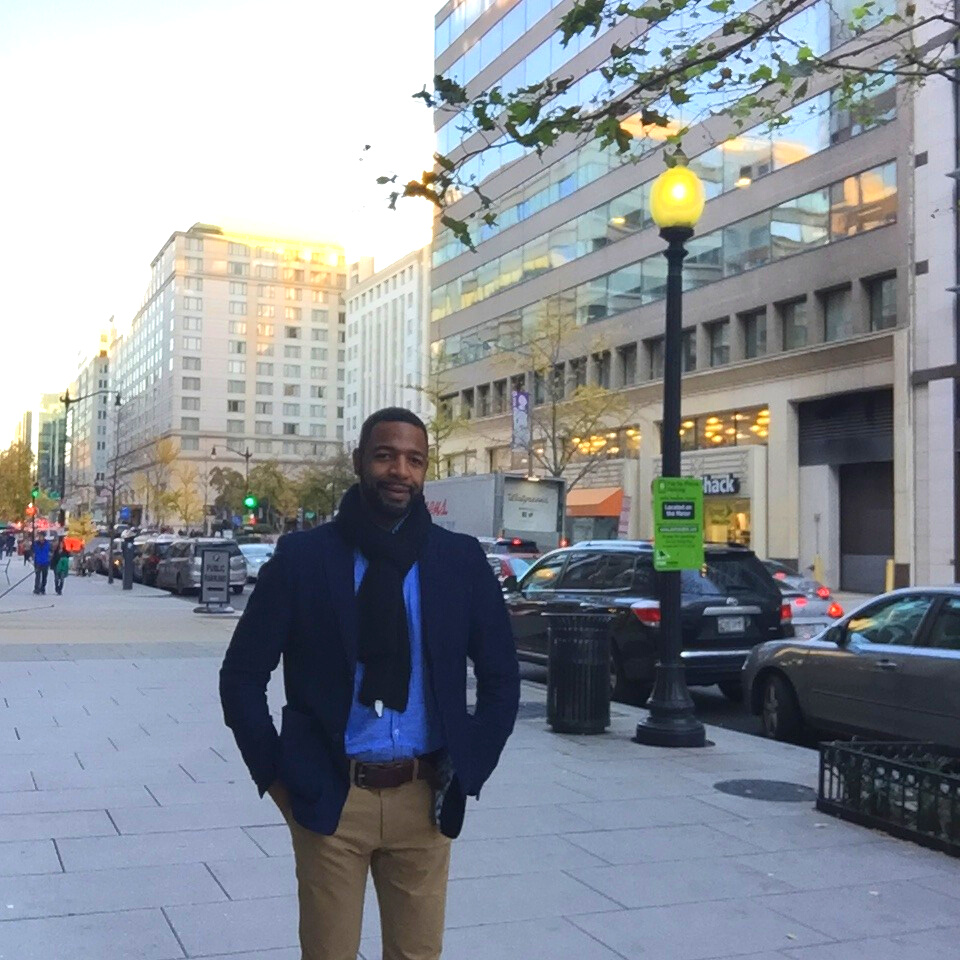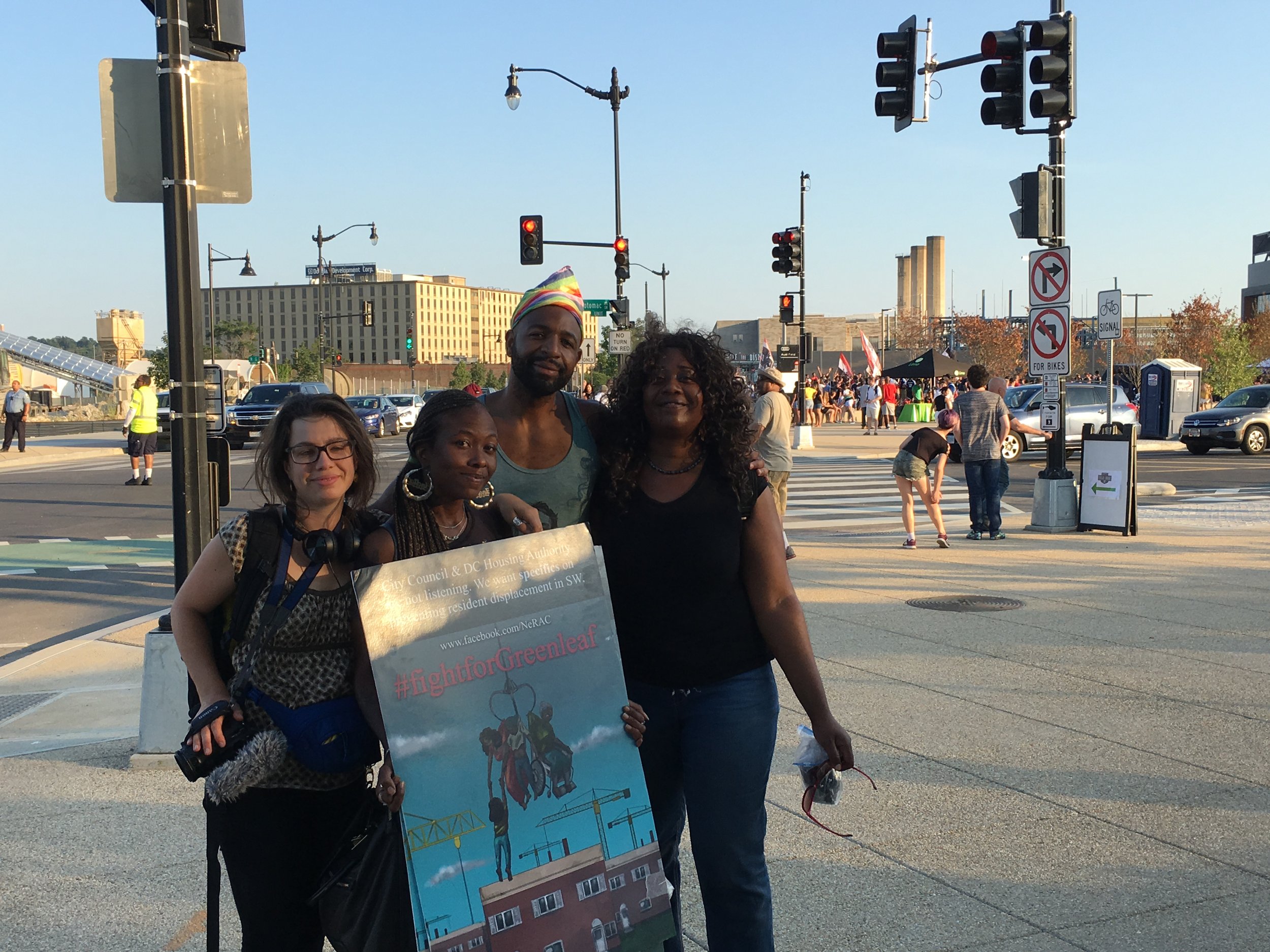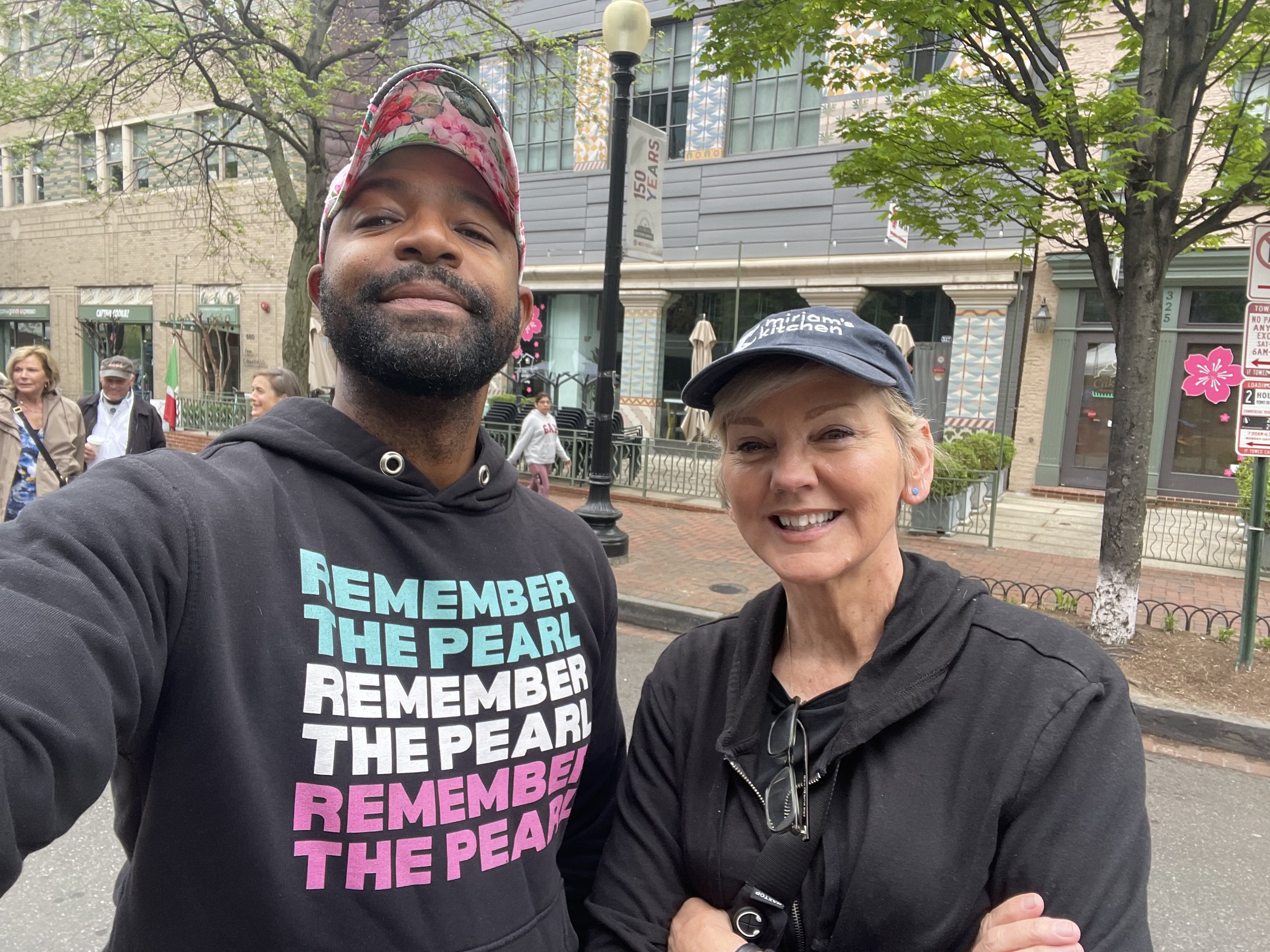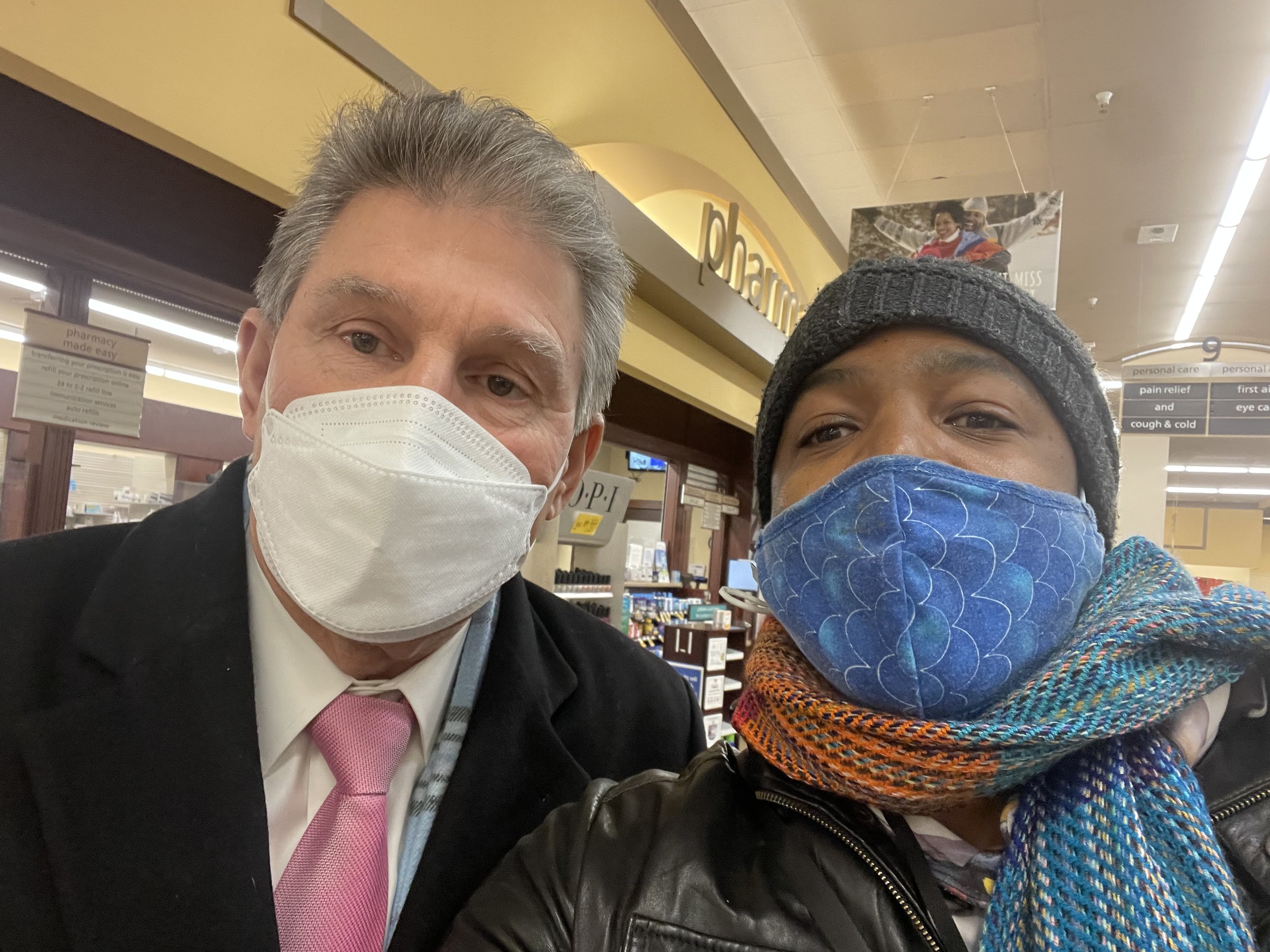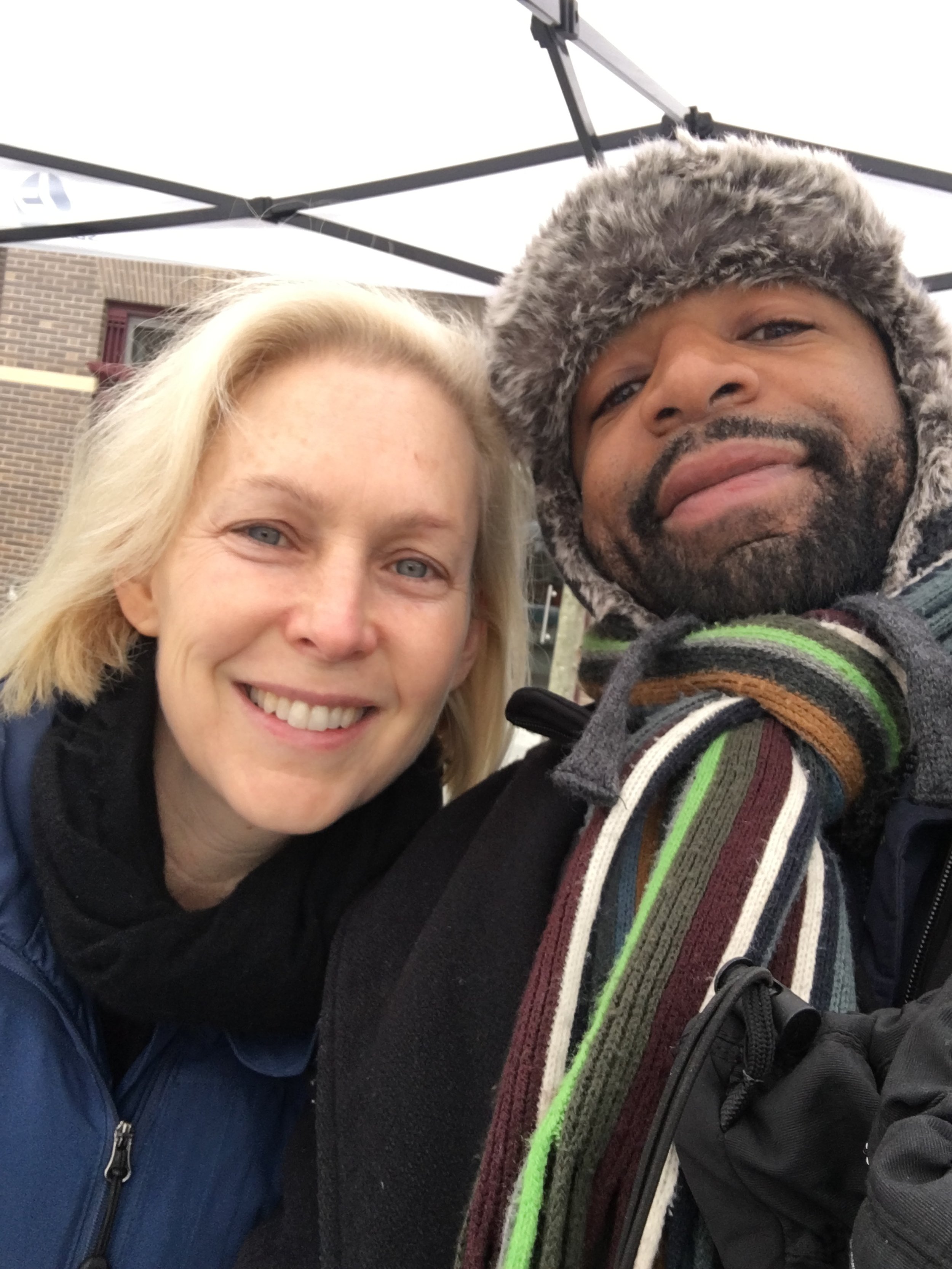
Equity Leadership: Research and Advocacy within Community of Practice
Grounded theory-building and transdisciplinary practices in the Public Health Economy
Do AI Models Have Moral Biases? Yes.
AI models - Grok, Claude, and ChatGPT - showed distinct approaches when asked about moral reasoning, revealing key differences. This link directs you to the Critical Race Framework research platform.
News Release
Applying Public Health Economic Analysis
Dr. Christopher Williams Responds to Dr. Mona Shah’s LinkedIn post on a recent study by Shawnita Sealy-Jefferson and colleagues on intersectionality and eviction in the Detroit metropolitan area.
“Applying public health economic analysis, 1) Now in economic recovery, Detroit's revival is seeing increased home prices and immense real estate speculation from US and global corporations. Eviction is likely to become more acute. 2) Without attention to social costs from rapid recovery and corporatism associated with increasing burden on working class families and racialized minorities, esp. Detroit natives, the Democratic Party will likely experience a more disillusioned voter base, 3) Rising home prices can be devastating - more households fall behind on property taxes - homes auctioned at firesale prices, direct and indirect displacement more likely, neighborhood change is likely to be associated with adverse physical and mental health, 4) Changes in the Detroit economy is likely to compound anarchy of the public health economy => 5) Liberation - a) Need for public health economic analysts to gather as much data as possible, b) Organize and support local residents to be politically engaged at city- and state-levels, including legal support, c) Going beyond research. The data-intensive approach is problematic where it does not affect the social and material conditions - determinants of the public health economy.”

Dr. Williams Publishes First Gentrification Health Study Using Neighborhood Cluster Analysis
Study published in Advances in Clinical Medical Research and Healthcare Delivery
Neighborhood change (NC) can be understood as a social determinant of health with direct psychosocial and economic impacts. Our objective was to define resident groups’ perceptions of NC and self-rated mental health in a community experiencing an intense form of NC known as gentrification. We conducted a cross-sectional study using random and convenience sampling. Our measures included a combination of scales and indexes that were used for conducting bivariate and cluster analyses. Our study included 143 responses from Phase II. Two of the three groups or clusters were statistically different in mental health and perceptions of NC impacts on community life, self-assessed vulnerability, and at-risk populations such as low-income and minoritized. We innovated a study design and use of cluster analysis that are not commonly found in gentrification health research. The practical implications of our study also can help support community health research beyond this field of study.

Dr. Williams and his colleagues lead a new general public health theory to gain major insight into persistent health inequities. Their conceptualization of the Public Health Economy and Public Health Liberation practice are garnering significant attention as a salient lens through which to understand motivations and behaviors across structural levels that influence public health.
Their approach is highly innovative because of a strong emphasis on interdisciplinary knowledge and effective transience across disparate environments in the public health economy. The behaviors of agents or classes of agents are essential to understand public health economic performance illegal or harmful action of the government. PH economic scope includes social, economic, educational, and political determinants and integrates non-traditional explanatory models. Eschewing estranged community relations, this form of practice is informed and motivated by real-world challenges, particularly for populations shouldering the burden of health inequity. Check out examples of public health economic practice.
Read More about the Public Health Economy
In fact, there are two major economies. We need growth and health equity gains.
The Public Health Economy: The Other Economy
The Critical Race Framework
The first critical appraisal tool in public health on the use of racial variables
On account of its subjectivity, ambiguity, and changeability, race poses significant challenges to research quality. Led by Dr. Williams in his dissertation research, the Critical Race Framework Study fills a major gap in the public health literature by standardizing critical evaluation for research studies that use racial taxonomy. Using fundamental realms of scientific inquiry, Dr. Williams makes a significant contribution and tool to public health.
The CRF is about Health Equity.
Race is too attenuated to charter a new path to accelerate health equity. A shift toward scientific reasoning in studying populations is intended to highlight the structural and lived experiences of populations to make science more meaningful and practical for translation. My dissertation research identified and addressed a major gap in the literature due to poor conceptual clarity and inconsistent operational definitions for racial variables in research. I developed a critical appraisal tool and training for public health experts that demonstrated quality evidence for implementation effectiveness, content validity, and interrater reliability. My research seeks to improve public health research weakened by current norms and practices. This study featured my research skills in adoption of conceptual frameworks, conducting literature reviews, study recruitment, data collection and analysis. I applied rigorous analytical methods that included: construct validity, content validity, exploratory factor analysis, qualitative analysis, interrater reliability, and bivariate analyses. The tool and training will be expanded and undergo further psychometric testing.

Ioannidis’ Framework on Positive Predictive Value Applied to Dr. Williams Critical Race Framework
John P. A. Ioannidis’ seminal work on the reliability of published research findings, particularly through his concept of Positive Predictive Value (PPV), provides a robust statistical framework to assess the probability that a statistically significant finding is true. Meanwhile, Christopher Williams’ development of the Critical Race (CR) Framework aims to create a critical appraisal tool to evaluate the methodological quality of studies employing racial taxonomy in health disparities research. This essay integrates Ioannidis’ PPV into Williams’ CR Framework, offering a quantitative lens to supplement its qualitative assessments. By doing so, we can better understand the reliability of race-based research findings and underscore the CR Framework’s role in improving scientific rigor. This analysis is detailed, analytical, and grounded in the statistical principles outlined by Ioannidis, tailored to the specific context of race-based studies as critiqued by Williams.
Read More
Critical Race Framework: News and Analysis
Dr. Christopher Wiliams, Principal Investigator of the Critical Race Framework, leverages article and policy critiques, large language models (e.g., Grok, ChatGPT, etc.), and comparative analyses to strengthen the Critical Race Framework as a significant contribution to the public health literature.
May 19, 2025
In a letter to the editors of the American Journal of Epidemiology, Dr. Christopher Williams expressed concerns about the study quality of Neighborhood eviction trajectories and odds of moderate and serious psychological distress during pregnancy among African American women, which was published in the journal in March 2024.
May 18, 2025
The findings of the Misclassification Study provide robust support for the validity and strength of the CR Framework study. By empirically demonstrating how race misclassification and noisy predictors compromise model fit, coefficient significance, and the ability to detect disparities, the Misclassification Study validates the CR Framework’s core assertions about the threats posed by race variables to research quality
May 17, 2025
Low validity in race classification, simulated as systematic misclassification, significantly impairs linear regression models predicting QoL. Low-validity models show reduced R-squared (0.811–0.798 vs. 0.823–0.810) and weakened Category3 coefficients, masking disparities. Continuous predictors remain robust, but ethical concerns highlight the need for accurate race data, even in simulated studies.
May 17, 2025
Accurate race classification is critical, even in simulated datasets. The idealized design amplifies the visibility of misclassification effects, suggesting real-world impacts could be more severe. Researchers should use validated race data and consider correction methods (Buonaccorsi, 2010). Ethically, simulating race data requires transparency to avoid perpetuating stereotypes or misinforming policy.
May 14, 2025
Racial health disparities in the United States are a deeply entrenched issue, shaped by historical, social, and systemic factors. Two manuscripts—"Structural racism and health inequities in the USA: evidence and interventions" by Bailey et al. (2017), published in The Lancet, and "Public Health Liberation - An Emerging Transdiscipline to Elucidate and Affect the Public Health Economy" by Williams et al. (2022), published in Advances in Clinical Medical Research and Healthcare Delivery—offer distinct approaches to understanding and addressing these disparities.
May 14, 2025
Based on this comparative analysis, I prefer "Public Health Liberation - An Emerging Transdiscipline to Elucidate and Transform the Public Health Economy" for its superior quality in theorizing health disparities. While "Conceptual Approaches to the Study of Health Disparities" offers a clear and comprehensive review of existing models, it lacks the innovation, inclusivity, and actionable focus that PHL provides.
May 15, 2025
In summary, Sen’s “Why Health Equity?” provides a foundational, capability‑oriented treatise that meticulously outlines normative criteria for justice in health. The PHL manuscript builds on and expands this foundation by introducing a liberation‑centered, community‑driven framework that speaks directly to the power dynamics perpetuating inequity. For those seeking philosophical rigor, Sen remains indispensable; for scholars and practitioners committed to systemic transformation through participatory theory‑building, PHL stands as the preferred guide.
May 14, 2025
This essay applies the Critical Race Framework (CRF), as developed by Christopher Williams (2024), to evaluate the use of race in the pediatrics study "Use of Race in Pediatric Clinical Practice Guidelines: A Systematic Review" by Gilliam et al. (2022). The CRF provides a structured methodology to assess research involving racial taxonomy through four critical areas: reliability, validity, internal validity, and external validity. By examining the pediatrics study's methodology, findings, and implications, this analysis explores its alignment with and divergence from CRF principles.
May 13, 2025
AI Proposes Changes to Critical Race Framework
The revised Critical Race Framework 3.0 enhances clarity, usability, comprehensiveness, and visual appeal to better appraise public health studies using racial taxonomy, aligning with the dissertation. Clarifications include a defined scope, simplified prompts, standardized terms like “race data collection tool,” and detailed quality scale criteria. Usability improves with user aid examples, secondary data guidance, a summary scoring system, an interactive HTML form with radio buttons, and a training link. New prompts address cultural/contextual factors, ethical implications, and transparency.
May 13, 2025
Problematic Non-Differentiation and Black Monolithism in Study of Religious/Spiritual Struggles and Mental Health Among Black Adolescents
The concept of a "Black monolith" refers to the tendency in academic research to treat Black individuals as a homogenous group, often overlooking the diverse socio-cultural, historical, and individual identities within Black populations. In their 2022 meta-synthesis, "Religious/Spiritual Struggles and Mental Health Among Black Adolescents and Emerging Adults: A Meta-synthesis," published in the Journal of Black Psychology, Janise S. Parker, Lee Purvis, and Breiana Williams explore how religious and spiritual struggles impact the mental health of Black youth. While the authors attempt to address diversity, their generalized recommendations and uncritical use of "Black" as a unifying category reinforce monolithic assumptions, limiting the study’s rigor and applicability.
May 12, 2025
Dr. Williams Responds to APHA's Recommendations on Racial and Ethnic Data: Forcing Global Race is Not Ethical or Scientific
The American Public Health Association (APHA) repeatedly acknowledges structural determinants as major drivers of racial and ethnic disparities in its October 2024 policy statement, The Case for Improved Racial and Ethnic Public Health Data Collection Practices to Reduce Racial Disparities in Health. Yet, its attempt at reform only worsens the anachronism and misappropriation of race in modern science. The field of public health should privilege scientific principles, as discussed extensively in the Critical Race Framework Study, over ideological preference for race while prioritizing action to anticipate and affect the poor performance of the public health economy.
May 12, 2025
Evaluating the Adequacy of the APHA Policy Statement on Racial and Ethnic Data Collection in Light of the Critical Race Framework (CRF)
The APHA policy statement advances health equity by advocating for disaggregated racial and ethnic data to address structural racism, but it falls short when evaluated against the CRF and Williams’ 2025 statement. The CRF’s rigorous appraisal tool and Williams’ critique expose the APHA’s reliance on race as a scientifically flawed construct that perpetuates biases and overlooks the context-dependent nature of public health economies. While the APHA’s strategies, such as self-reported data and PAR, are practical, they lack the methodological rigor and inclusivity needed to ensure high-quality research. Williams’ Public Health Liberation framework offers a promising alternative, emphasizing non-racial, context-specific determinants to address inequities inclusively.
May 12, 2025
Race Essentialism in COVID-19 Study Emblematic of Poor Practices in Research
The study by Lewis et al. (2025), titled "Beyond Fear of Backlash: Effects of Messages about Structural Drivers of COVID-19 Disparities among Large Samples of Asian, Black, Hispanic, and White Americans" oversimplifies the complex, heterogeneous realities within these groups and risks undermining the study’s validity and applicability. Drawing on insights from the Critical Race (CR) Framework, which emphasizes rigorous conceptualization and operationalization of race in research, this essay explores the problematic nature of assuming racial monoliths in Lewis et al.’s study, its implications for research quality, and potential pathways for improvement.
May 12, 2025
The Critical Race Framework Available for Download
The Critical Race Framework is a 20-item critical appraisal for public health studies that use racial taxonomy. It was designed for and tested by public health doctoral students and Ph.D.-holders. The CR Framework assumes that users have high familiarity with each key area of critical appraisal: reliability, validity, internal validity, and external validity. To download a copy, complete the form below.
Read More
Prescience of the Public Health Liberation
The 2022 PHL manuscript demonstrates significant prescience in anticipating 2025 public health challenges under the Trump administration. Its concepts of public health economy, health equity, liberation, illiberation, morality principle, and historical trauma, along with its theories (THIR, Public Health Realism, Hegemonic Theory), align closely with current events, particularly the risks posed by lead pipe regulation rollbacks and the MAHA Commission’s focus. While horizontal integration, vertical integration, and liberation safe spaces show moderate prescience due to the top-down nature of federal policies, the gaze of the enslaved has limited alignment pending further information. PHL’s framework remains a vital guide for addressing structural inequities, especially in communities like Washington, DC, advocating for transformative, community-led public health strategies.
Statistical Hacking
Statistical hacking is an issue in public health and biomedical research, arising from inattention to research decisions.
The Health Energy theory seeks a quantum leap in public health theory by leveraging quantum theory. This work has evolved with the help of Grok (xAI).
Premise: Health inequity results from determinants of health that are deeply intertwined with complex time- and space-bound social, political, and economic systems for which public health theory has hardly captured. Stagnant public health outcomes, particularly in light of US life expectancy to other developed countries, point to statis in the public health economy. Innovation is needed. But how?
Might we be more tied together than we think?

Evolving Public Health: A Quantum Leap
A World of Possibilities and Energy
What Counts and Does Not Count in Public Health?

Mother's Love

Faith

Historical Legacies
Introduction to Postmodern Theory of Public Health
Developed by Dr. Christopher Williams with theory and concept contributions from Grok (xAI)
The postmodern theory of public health posits that health is a qualitative probabilistic state that arises from a health energy field within the public health economy. In this view, the energy field is not defined in modern units of measurement such as joules to energy and work, but altogether different - unquantifiable, unmeasurable, and unknowable. It is no different from the way that modern science has no way of knowing or measuring all total energy on Earth. Situated within the realm of public health, the postmodern theory finds that modern terms like “disease” and “diagnosis” can be theorized as a random probability derived from an incalculable probability curve. This curve is not solely based on causes found in modern theory. The probability curve extends beyond scientific probability of being diagnosed with x-disease due to a set of risk factors. Rather, it is probability that results from all total energy bounded by time and space. In simple terms, we can view health non-deterministically at any given point, as infinite stacks of probabilities - how perhaps a teacher shifted the probability of a child toward academic and career success or how a colonizing legacy restructured health possibilities in today’s world.
Is Love (Vital Energy) a Concept that Belongs in Public Health? “Yes,” says Cardiologist.
"We know and when we're celebrating love, especially on Valentine's Day, that it's not just a Hallmark holiday. Having support where it be friends, a partner, family members, but being loved is going to help with that social connection. It's going to help decrease depression and ultimately it's going to help your health, so it's important to tell someone you love them today and reach out and maybe give someone a hug that might need it. Feeling that connection and community is going to help you live longer and happier and healthier." [1]
“We must evolve - our research, teaching, and practice, even preaching, to align with the exigencies of the public health economy.”
— Christopher Williams, PhD

The Public Health Economy
The New Frontier of Public Health
We will not introduce order in the public health economy if we do not become more integrated horizontally and vertically.

Transportation is Public Health.
The Public Health Economy Matters, so Public Health Must Be Everywhere.
There is a need for major reform in the Public Health Economy, but it seems every major player wants someone else to change.
No concession of power, no responsibility, or no sacrifice for the greater good…only impedes change.
Comparing the Two Economies: The Traditional Economy and Public Health Economy
Competition and Disorder
Both the traditional economy and public health economy can be understood as competitive and disorderly - arenas of competing and incompatible agendas, priorities, and coalitions.
Lacking Central Moral Principles
Both economies lack central moral principles - essentially, a common morality - that would otherwise limit injury and harm.
Inefficient Outcomes
Both economies produce outcomes through inefficient and unjust pathways. Benefits are not uniformly shared and democratized - increasingly concentrated, in fact. Whether in terms of income inequality or flourishing ecological devastation, these economies do not strive to arrive at a point of growth or progress through reconciliation of tensions and contradictions - wholeness.
Survival
As profit maximization is defined as a central goal in economic theory, maximization of self-interests is the lens through which to rationalize universal motivations. In the public health economy, each agent or class of agents are left to define and defend their own interests - however beneficial (or not) to public health.
Entangled Wealth Concentration
Data from the Congressional Budget Office on family wealth concentration shows a stark picture; although, it probably comes as no surprise to the average American. The US is struggling to make the American dream real. Our national myth that opportunity is within reach for every American who is willing to work hard is about as true as Big Foot or the Loch Ness Monster.
Yet, this data obscures something much more ominous - entanglement. We can think of entanglement as the way in which one system becomes entangled with others. While the economic elite can do good in society with university contributions, charitable foundations, and the like, this vital energy is far outweighed by a greater destructive energy that threatens US values and society. It undermines democratic rule - a government by and for the people - because it becomes rule by a few. With such wealth concentration comes deepening stratification, closed and insular social networks that bring benefits unto themselves, secret power-brokering, massive hording of political capital to shape agendas, sheer economic power to maximize profit and to dissuade legislative and legal oversight, shadowy legislative and judicial influence, and other mechanisms of control. On the extreme ends, those from the top economic classes have even “bought” judges and influenced judicial decision making and legal theories to favor electioneering. Perhaps their greatest tool lies in group solidarity and recruitment, including finding support from adjacent wealth groups and political elites, that protect their ever-growing wealth and power. Finally, their wealth deprives the average American from just rewards for educational pursuits and labor contributions. Stunted economic freedom and diminished capacity for full human development are all entangled with wealth concentration.
Why Do We Need the Public Health Economy?
Economics and Public Health Theory Aren’t Enough.
The Public health economy is a long overdue framework. As public health discourse has recently expanded to include social and political determinants of health in the last decade, Public Health Liberation has identified a new “economy”. It says that there are two major economies - 1) the traditional economy as defined by growth, GDP, employment, supply and demand and 2) the public health economy. The public health economic brings the structural and contextual determinants under a single transdisciplinary umbrella through rich insight and analysis, including the establishment of a framework to rationalize motivations and behaviors. It helps to elucidate public health challenges to achieve health equity, especially for vulnerable populations.
Illustrating the Public Health Economic Framework: Examples of Public Health Economic Arenas
Regulatory Framework and Enforcement
Public health economic analysis draws upon the regulatory ecosystem - policymaking, rulemaking, enforcement, and legislative oversight. While economics may intersect with the profit motive at the heart of economic theory (e.g., lax regulation to minimize costs), economic theory does not provide high explanatory powers across a broad set of attitudes and behaviors. First, there is the “revolving door,” in which someone moves from representing an industry into a government regulatory position, then back to industry.
We see in our community of practice in Washington, DC that environmental regulators do not fully implement environmental laws. The laws on regulating the regulator call for the agency to establish findings of fact to minimize risks to public health and safety as a condition of issuing air pollution permits. The regulator is not doing this. It also turns out that the legislature, which is obligated to provide oversight of government agencies’ adherence to the law, does not fully exercise that authority and responsibility. Government employees who take documents home that should be available to public discoverability (“FOIA”) and the government stonewalling FOIA request are altogether other issues.
Moral decline at heart of opioid crisis: Why moral reasoning matters in the public health economy
"Did I really care about being responsible? No!"
- Former VP of Sales
“The hard-nosed truth is that we can never have order in the public health economy if everyone pursues their own agenda, including many who want to maintain the status quo or strive to be free from accountability and oversight in all manner of external and internal relations.
The public health economy lacks order.”
— Christopher Williams
Excerpt from Public Health Liberation Manuscript
“The need for PHL: the lessons of Flint, Michigan and Washington, DC The lead crisis in Flint, Michigan demonstrates the need for Public Health Liberation. To our under standing, an injunction to prevent a switch to the Flint River was not requested. If granted, a request to enjoin the switch could have prevented the public health crisis that disproportionately affected Black Americans while demanding that the Flint govern ment and state of Michigan disclose more infor mation, including its plan to not adequately treat water from the Flint River, through a process of discovery. It would have involved Flint government paying to extend its contract with another water authority until an adequate plan could be put into place.
This legal insight is precisely the proactive public health transformation that PHL envisions. In fact, there are almost 3,000 U.S. neighborhoods with lead poisoning rates at least twice as high as during the peak of Flint's lead crisis that should now be the focus for a public health transformation. The Flint Water crisis was not the only major case of environmental racism due to abject failure in water authority policy. Black communities in Washington, DC also suffered a lead crisis in the early 2000s that was “20 to 30 times larger” than Flint's.10 It crystallized interlocking injustices implicating Washington's Water and Sewer Authority and the U.S. Centers for Disease Control (CDC). “The U.S. Centers for Disease Control came into town and wrote a falsified report that literally claimed that not a single man, woman or child in D.C. had any evidence any of them had their blood lead elevated above CDC's level of concern,” according to Virginia Tech environmental engineer Marc Edwards.
An investigation by the US House of Representatives found that the CDC made “scientifically indefensible claims.”11 PHL calls attention to the public health economy for this reason. These crises illustrate the need for a single discipline to reflect this milieu and to fulfill the vision of PHL. Contaminated water crises are among a whole host of economic, political, and social challenges that warrant public health attention and intervention” Read More
“True compassion is more than flinging a coin to a beggar; it comes to see that an edifice which produces beggars needs restructuring.”
~ Dr. Martin Luther King Jr.
Public Health Economic Practice
Dr. Williams and his community of practice innovated the conceptualization and operationalization of public health economic practice to fill a major gap in public health learning and practice. As opposed to acontextual, laboratory theory-building and problem identification, PHE practice relies on transdisciplinary knowledge and research, advocacy, and policy influence in defense of vulnerable populations and informed by their real-world challenges. The public health economy is defined as the second major “economy” next to the traditional “economy” of growth, employment, and wealth-making. Community knowledge and collective striving are central to PHE practice as part of a broad strategy for knowledge-building and analytical synthesis. Dr. Williams’ community of practice within public housing communities in Washington, DC has provided invaluable training.
Spurred by an urgent moral calling to accelerate equity and social reform, Dr. Williams situates his work within an original theory of the public health economy - an umbrella term under which structural determinants of health are housed. It includes less visible sources of health inequity such as lax oversight, poor program implementation, political stimulatory theory, and predatory or instrumental research practices and community relations. His approach seeks to understand what has health equity gains “stuck” and to impact interdependent yet distinct root causes of health inequity within the complex nature of real-world challenges.
It necessarily requires interdisciplinary synthesis. Dr. Williams has assessed environmental regulator’s application of the law, conducted health research on the social costs of gentrification, filed legal cases, and evaluated the quality of health impact assessments, among other achievements.
Dr. Williams is a national leader within an emerging approach and movement in health justice - critically assessing theories and practices that may hinder pathways to health equity. He holds a PhD in public health from a top research university and is founder of Public Health Liberation. His dissertation, “Critical Race Framework Study: Standardizing Critical Evaluation for Research Studies That Use Racial Taxonomy” is the first public health critical appraisal tool for studies that use racial taxonomy. Such a tool, in tandem with PHE practice, is needed to accelerate health equity. His study premise is supported by recent recommendations in the use of race in research from the National Academies of Sciences, Engineering, and Medicine.
Christopher Williams, PhD
“I was thrust into a new realm of research and advocacy identity because of the relentless system of intentional racial harm and structural racism, especially against low-income residents, that I had witnessed up close and personal in the nation’s capital.”
Public Health Economic Practice: Examples

Drawing on experience in policymaking, Dr. Williams has liaised with city council on the establishment of a public health agency to surveil the public health economy.

In March 2024, Dr. Williams drew on public health economic analysis (e.g., adverse community experiences, past agency performance, previous low quality environmental assessments) to help strengthen an environmental justice bill.

Dr. Williams joined with the community to protest an ongoing environmental permit and case of environmental racism. He subsequently provided a legal analysis of gaps in the regulatory review and preliminary approval.
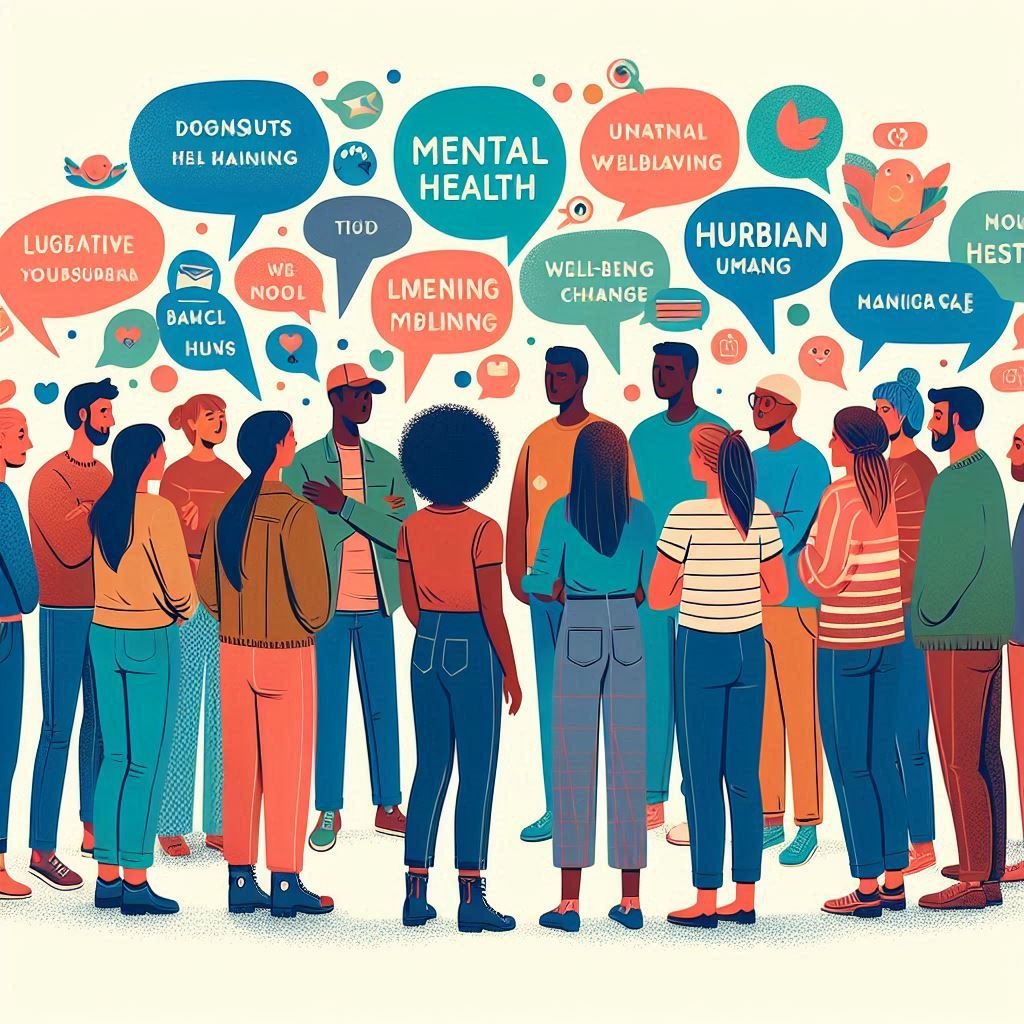
Dr. Williams conducted a study on the neighborhood influence on mental health. His first two manuscripts on the framework and psychometric testing have been published. His analysis using cluster groups has been accepted and will published in early 2025.

Dr. Williams tracks outcomes of public education and advocates for addressing deep educational disparities in Washington, DC. Shown: DC school proficiency rates in English language arts and math.
Commissioner Hamilton’s (right) leadership in environmental and housing justice provided Dr. Williams with a blueprint for reformed public health practice. Dr. Williams owes Commissioner Hamilton a debt of gratitude for his professional identity formation.
Community Perspective on Dr. Williams
“I am so grateful to you for everything that you have done to support us. We are extremely fortunate that you are in the community fighting so hard for us. Every community should have a leader like you who has a big heart and a lot of compassion and understanding of the residents and what they need and should have as residents in this city. You have pushed so hard along with us to make sure that our voices are heard and acknowledged. We are extremely grateful for your steadfast commitment to us and the community. There have been so many times that I have come into the room and knew that you had our backs.”
~ Commissioner Rhonda Hamilton, Washington, DC
(right in photo)

Image: Tyler Lloyd







Sample Media.
Environmental justice and community. Tyler Lloyd, Creator (right)



